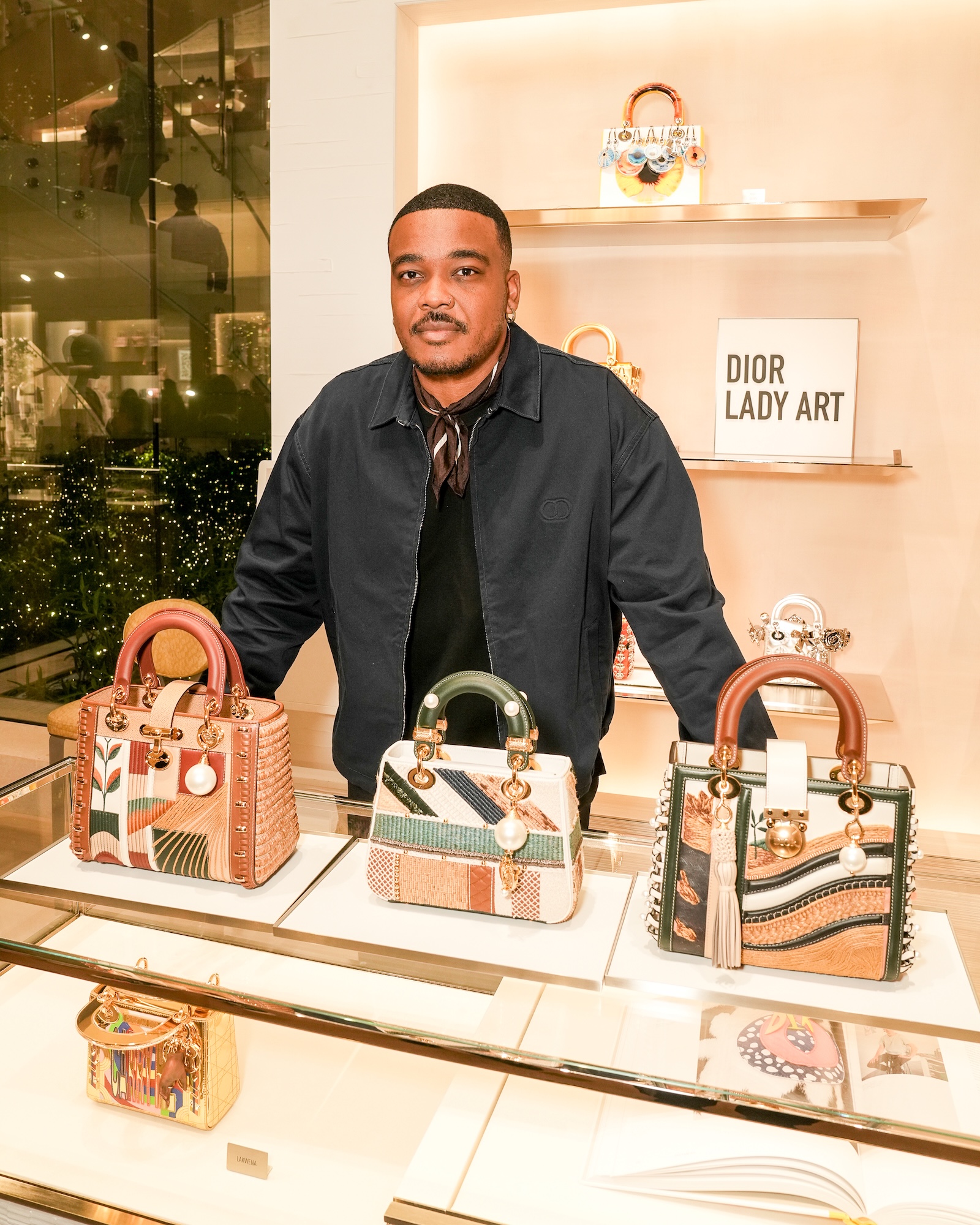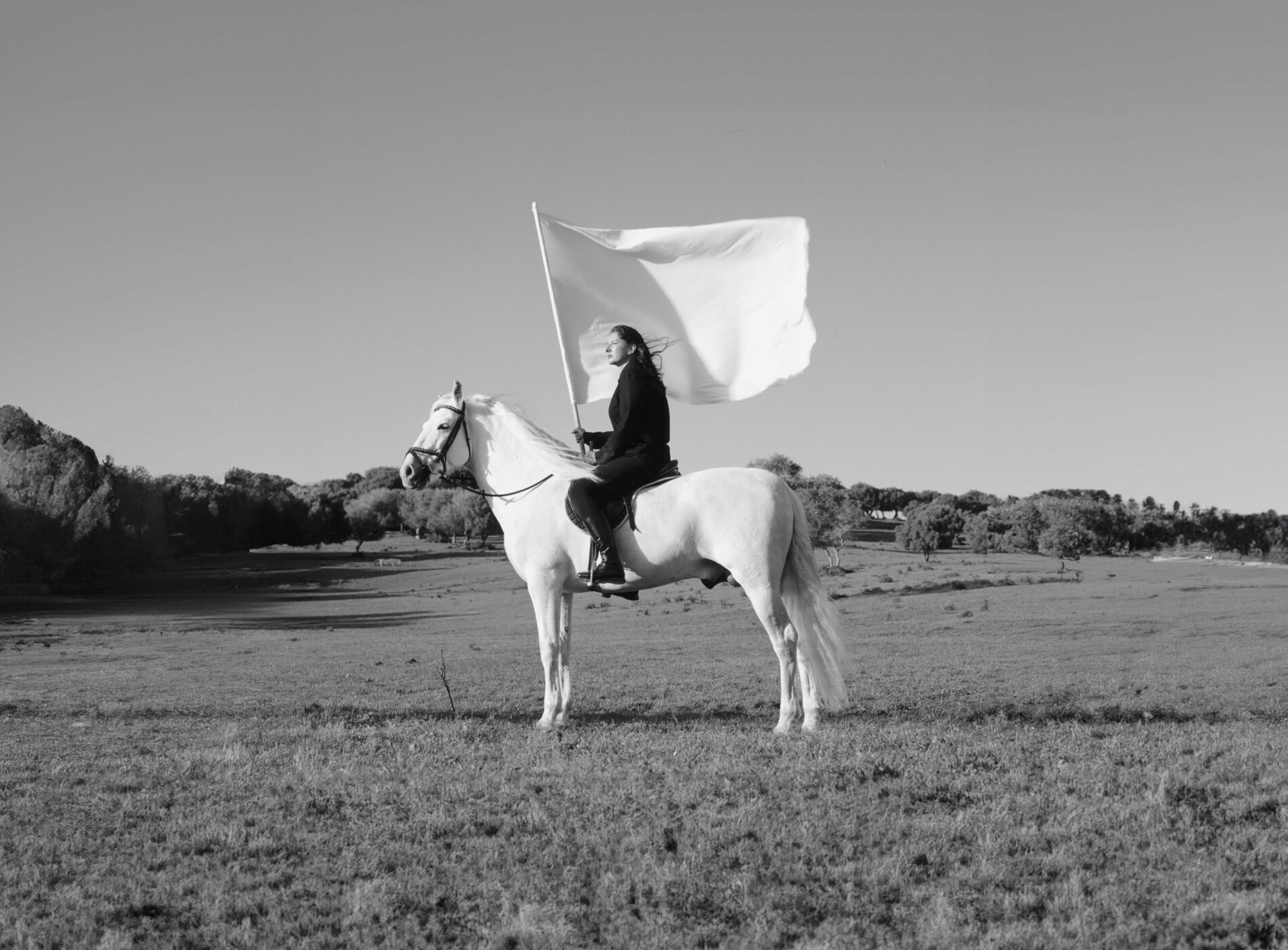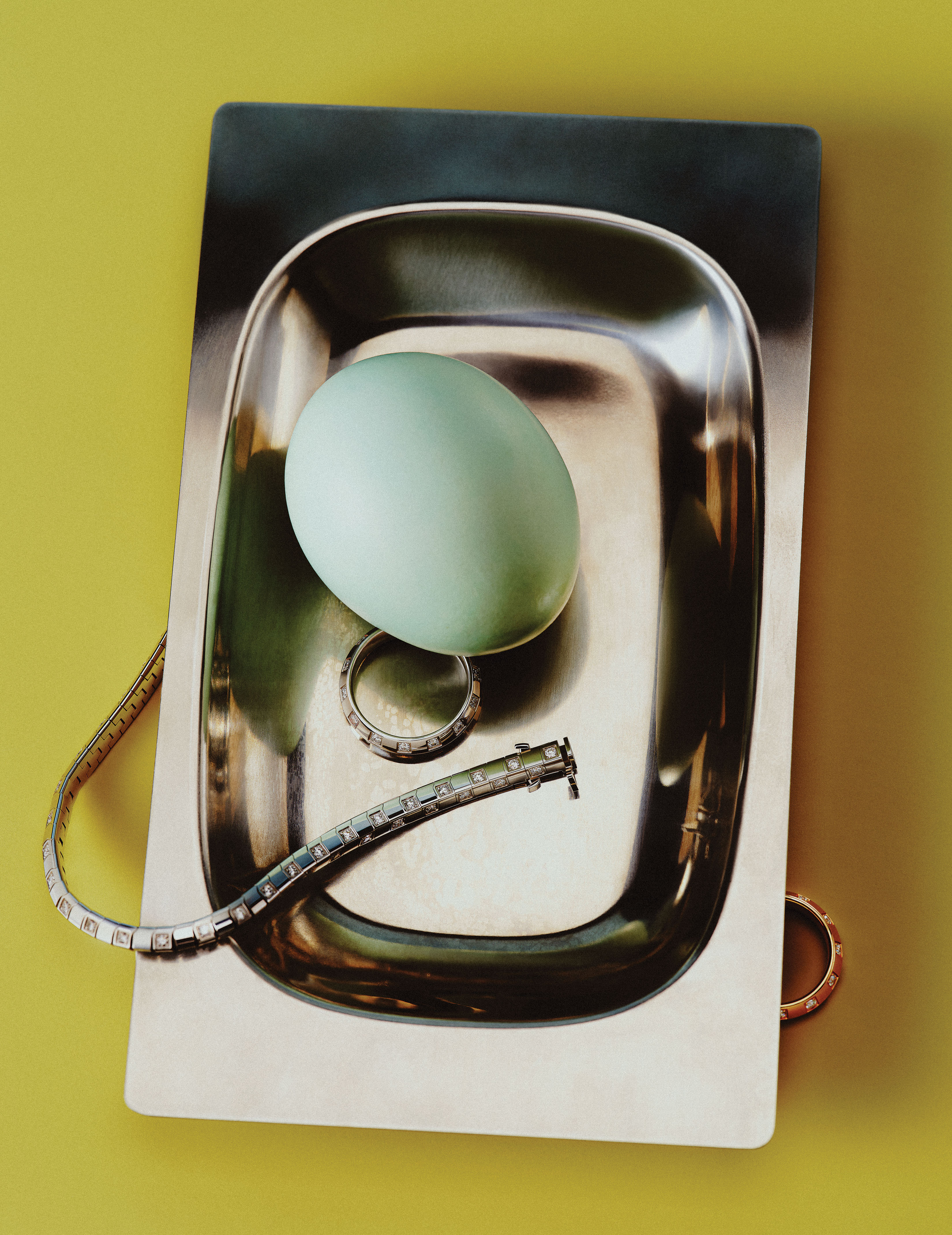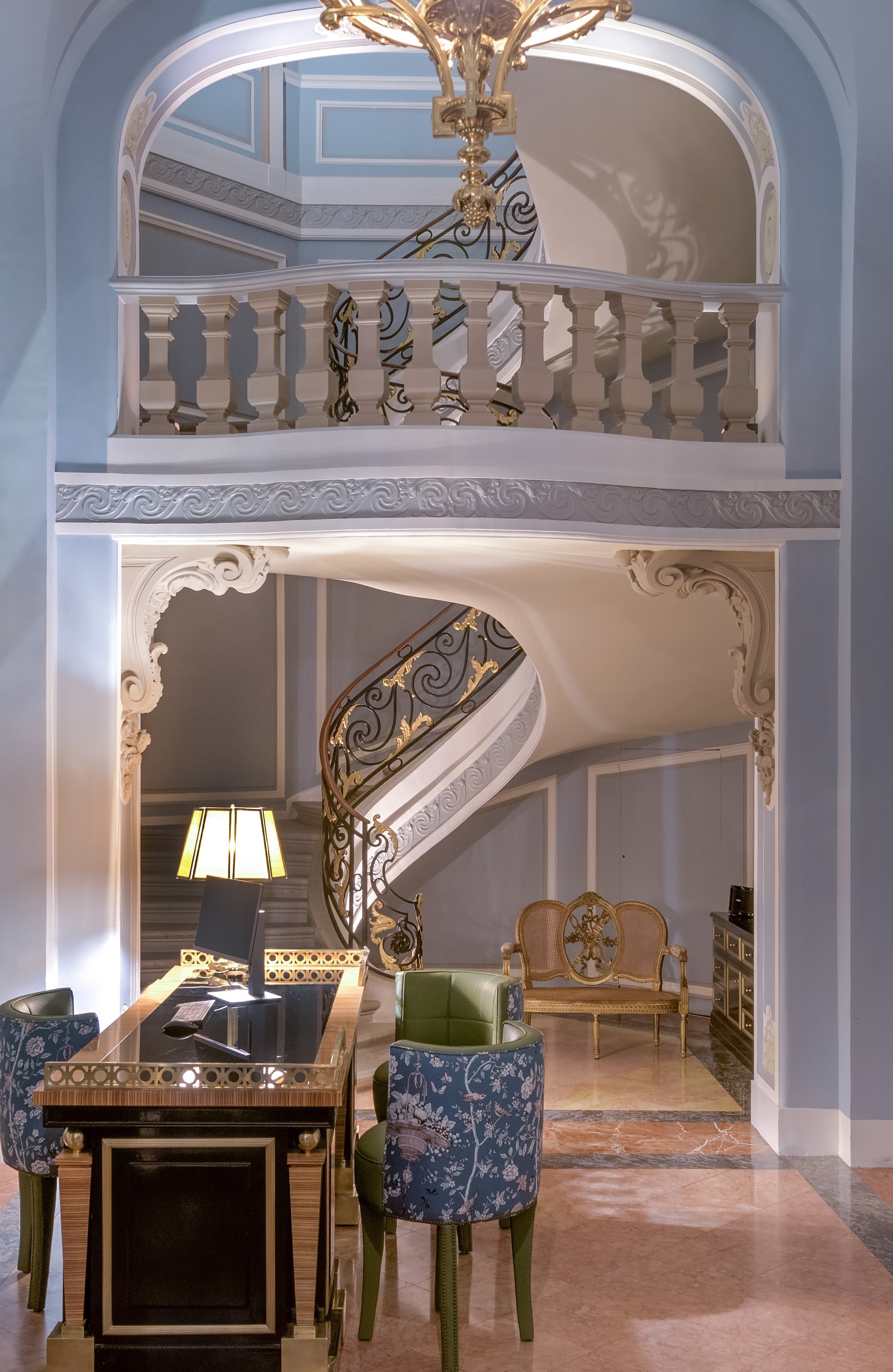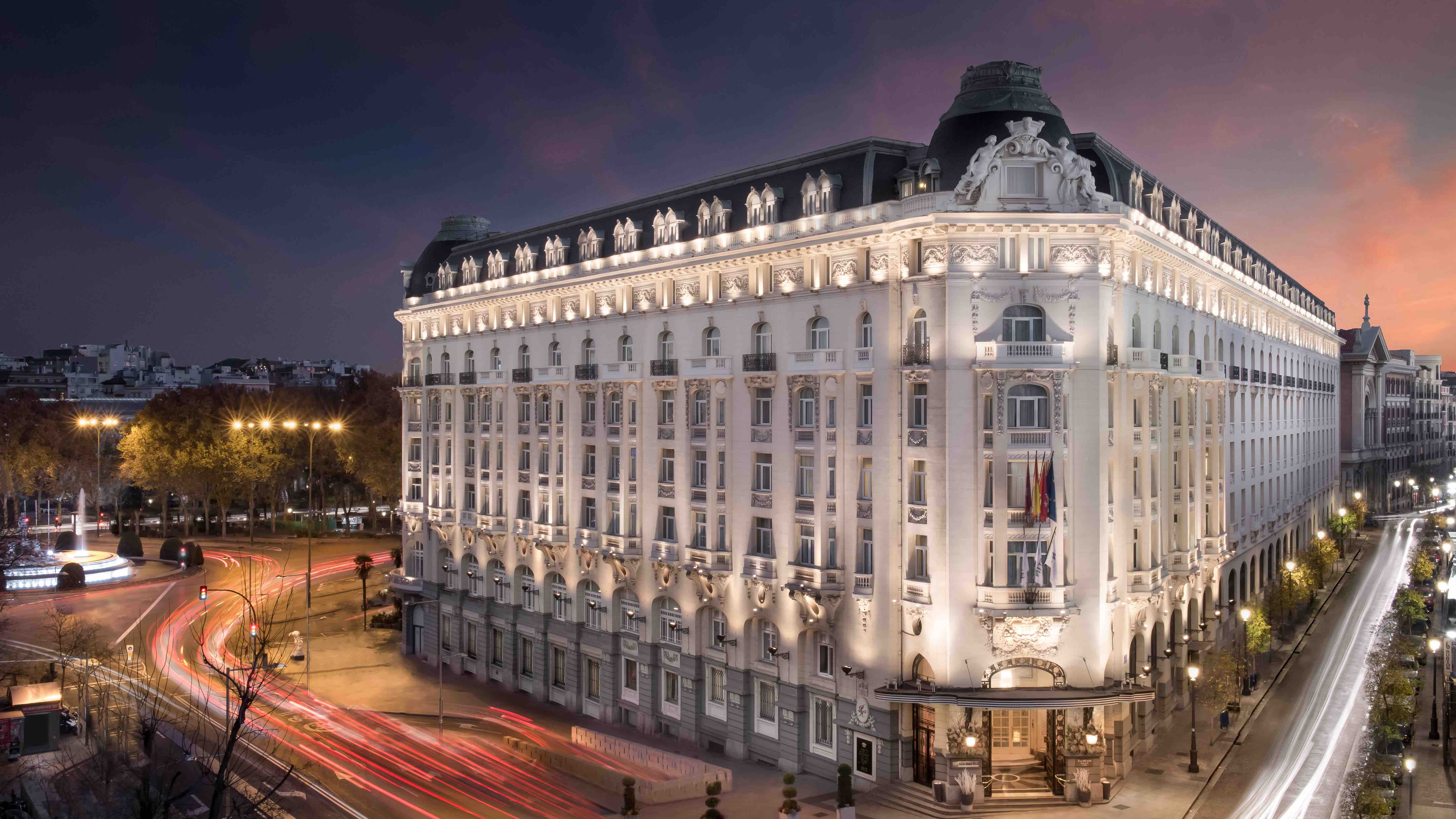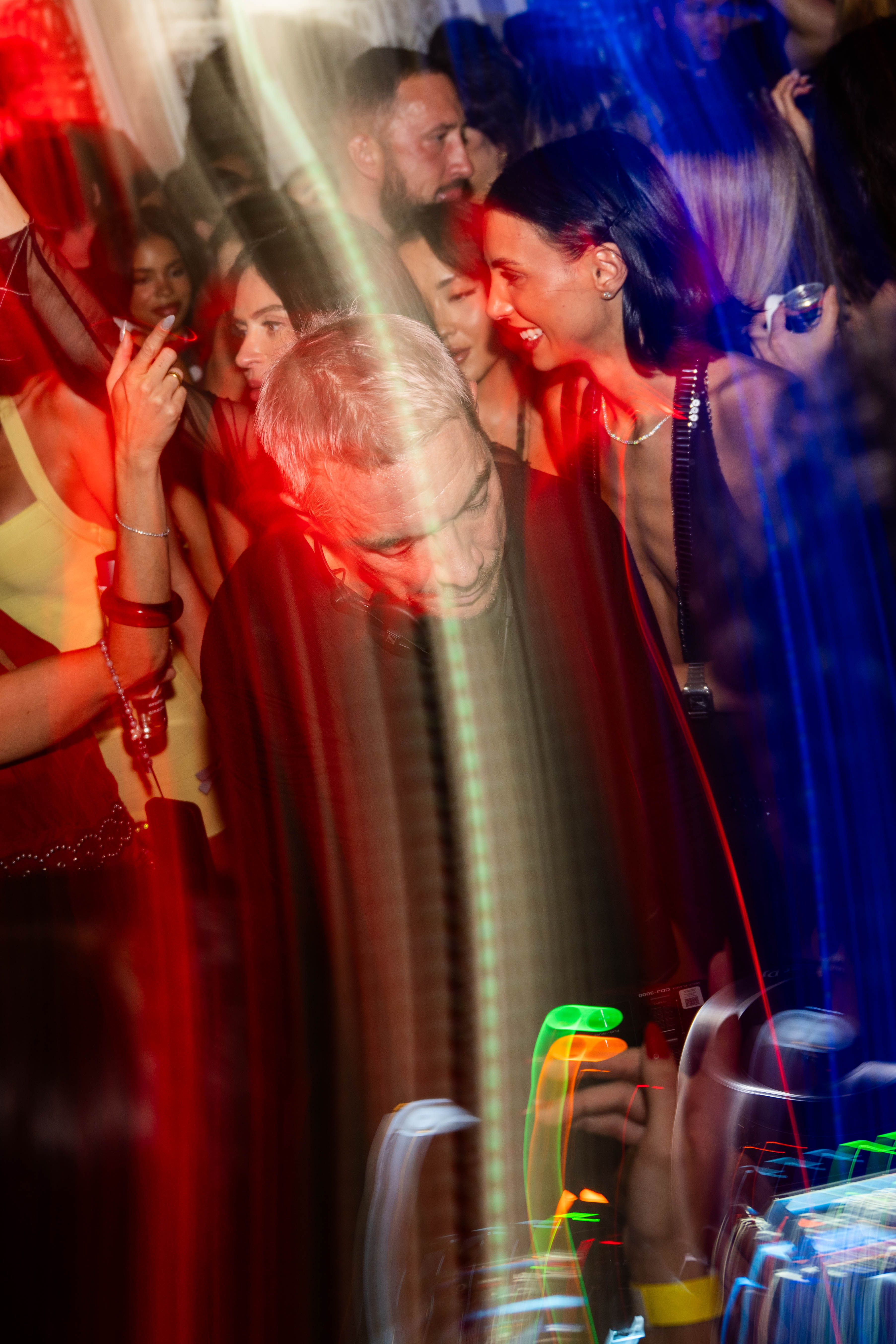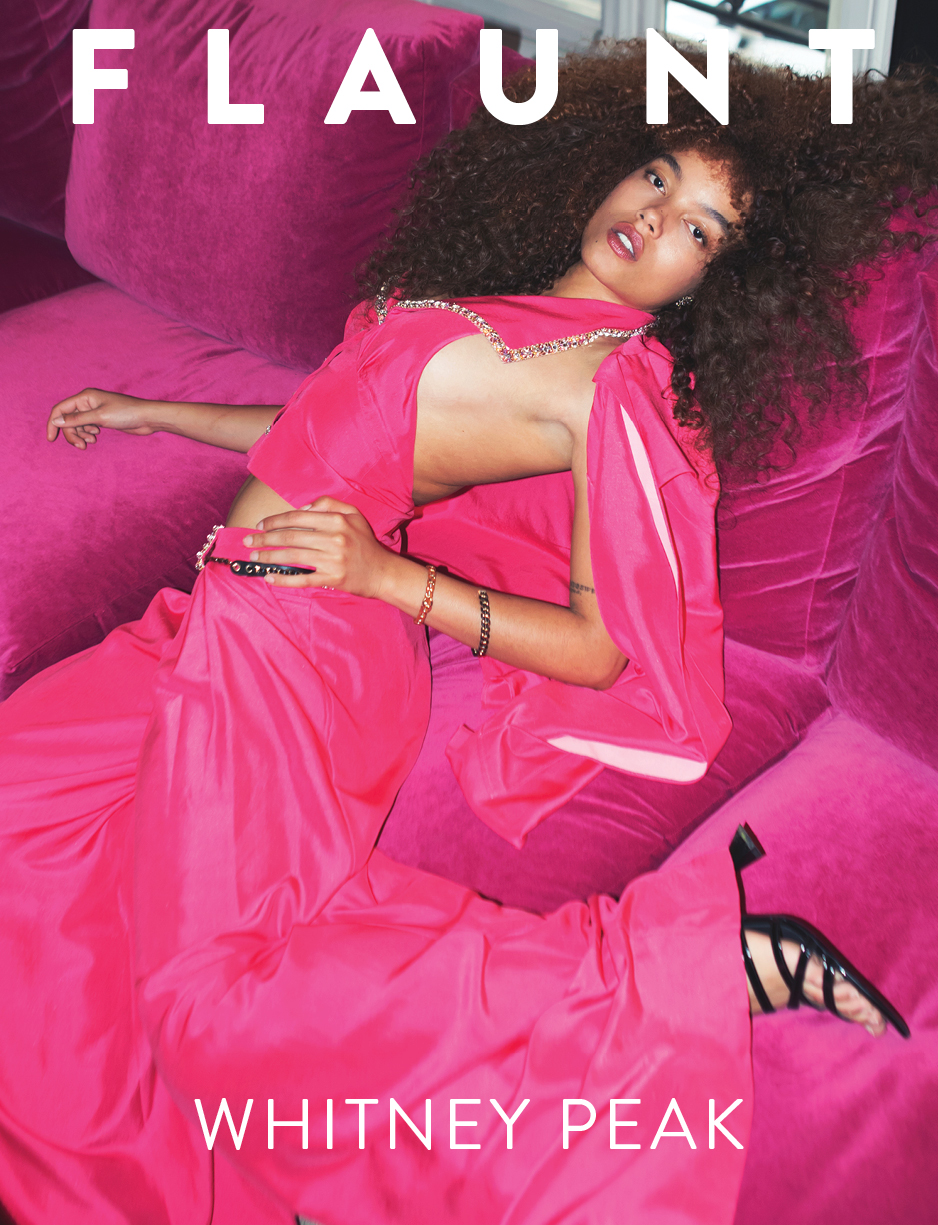

Photo by [Josh Franklin](https://www.instagram.com/joshgfranklin/)
For the last few years, the winter scene at the [Colburn School](https://www.colburnschool.edu) in Downtown on Monday nights have reflected a renaissance of sorts, embracing an artful bohemianism only LA could provide. Along with the typical guest of experimental connoisseurs and the rampant culture vultures the latest crew to join in on all the avant garde fun is one of the fashion set. Every Monday brings forth a bevy of looks, as if [Dover Street Market](https://www.doverstreetmarket.com) exploded onto a canvas of doe-eyed waifs with craftily disheveled hair and deeply scented in oud. With this support the venue has been a strong voice in bringing undervalued works from classical and modern experimental compositions to the forefront. I sat down with Jonathan Hepfer, the man leading this series to talk about minimalism, bringing obscure and marginalized voices forward, and the way in which cultural caché is being derived from [Monday Evening Concerts](http://www.mondayeveningconcerts.org).
* * *
**Hey love, how are you thanks so much for sitting down with us. Tell me about this upcoming season!**
This is our 2018-2019 debut, it is going to be centered around Steve Reich with 18 musicians.
**Tell me more about him, what was Steve’s work about?**
He’s famous along with Philip Glass, essentially one of the founders of what is now known as American minimalism. So think in terms of maybe the art world, Richard Serra, Donald Judd, and Bruce Nauman.
**What is the process of picking him; what moved you to this particular direction?**
“The Music for 18 Musicians” is an iconic piece of work, so I wanted to give it an unique take vis-a-vis what the mission of the series is able to bring with it. So I paired it with 12th and 13th century music by the Notre Dame school polyphonic Léonin and Pérotin who are quite under represented in contemporary musical culture and it is a type of concert you don’t see anywhere. This 12th century music side by side with 20th century music and the two things I think reveal certain things about one another. I like the fact that we are pairing very old ancient sacred music with quite secular seeming, minimalist contemporary music. The other piece on the program is called “Come Out” by Steve Reich so it’s a piece from 1966, where as Music for 18 Musicians is from 1976. “Come Out” is the voice of Daniel Hamm who is the falsely accused Harlem 6. who were a group of 6 black individuals who were falsely accused of murdering somebody. They were subjected to prison beatings. It was a very early piece addressing police brutality. it’s one of the first civil rights pieces in the realm of classical music, and finds many resonances today Black Lives Matter movement.
There is a strong repetition of the phrase “Come Out to Show Them” which is what Daniel Hem did at the to time to exasperate so he could get medical attention in prison because he was being untreated. So it is a repetition of the phrase “Come Out to Show Them” but done in this way with phase tape loops so what starts as one voice loop multiplies into two, multiplies into four, multiplies into eight, and during that process coherent verbal language looses its semantic meaning and dissolves into pure phonetic and musical sound. To me its sort of about this idea about a voice proliferating and transcending. And I see it as being sort of the not so obvious precursor of the purely instrumental music for “Music for 18 Musicians”.
**Why do you think this is very poignant right now beyond the political subtext of it at all? What is it about it sonically and aesthetically that relates to the modern times? We are in this place where politics, is still the way it is. We live the way it is, but how does it relate to the times before, how does it relate to now, and how does it relate to the future proliferations of the ideology were we are transcendent of conceptualized identity of modernized racism and modernized institutionalization.**
The best way I think I personally can answer is a quote that has been on my mind recently that Andrei Tarkovsky said about how he felt basically that “his form of prayer is making film.” So he is a faithful person but not in a matter of church. His version of praying was with a camera and for me Steve Reich’s music, his version is praying through repetition. To take the 60’s such an explicit subject, which is the voice of this young man. It helps to know that Steve Reich is absolutely iconic in terms of the development of American Minimalism. There is so much to talk about and I don’t know what I could get into at this moment, but music as a gradual process was something that was in the air in the 60’s. His sort of response to this prevailing culture what was known as serialism at the time. In order to make ‘serious music’ in the 1960’s or 50’s. One usually allied themselves with the principles or tenets of serialism, which is this Second Viennese invention. One usually allied themselves with the principles or tenants of serialism, which is this second Viennese invention. To me Reich’s version of doing this was absolutely fresh and it has made its way into all kinds of popular musics nowadays, more artists than I could mention right now would cite Steve Reich as pivotal or seminal in their musical development on some level.
**Where are you trying to take this project sonically for the Monday, where do you like to lead? What is the conceptualization for the next one and continuing them for the project right now?**
The next concert beyond our December 17th program, is going to be a piece by Sarah Hennies’ Contralto. Contralto is a word that means the lowest female singing voice. I think it is a brilliant title because Sarah went through a transition these past four years and now fully envisioned as a woman. The piece is documents several women from her speech pathology class who were in their process of training their voices to essentially be more feminine. So it was a speech pathology class that she was in, in Ithaca.
**I want to cut you off right now and say, how much is the importance to your project and your type of direction and it being very documentation of marginalized people and people of color.**
I think it is all a type of learning process for me. Socially, politically, musically and artistically - I am always trying to grow and learn through the works I choose to present.
**As a white cis gendered male?**
Yes completely, I just asked Sarah for a video of the piece and I watched and I had to say that about 40 minutes in I felt myself completely moved in a way, that I have never been moved in way by classical music in a while.
**What is it like, would you say it had to be something to do with gender or experiential?**
It’s a complex thing, it’s something I have avoided to talk about because I am not sure I yet have the right words to describe it. But someone I have admired for a long time is Samuel Beckett. I think I have always admired with his work, is that he hasn’t used obvious triggers, obvious ways, of getting you to the point where you are feeling something but through this unique version of repetition and structure he puts in his works you get to a place that is intensely fragile and deeply human. I found that her work did that for me. At a certain point I have found myself so used to the subjects of the thing that you just become so deeply attuned to what is uniquely human about all of them. To see what they are going through and it lets you into a certain part of their world. All I can say it is deeply moved me and something I wanted to share with others.
**As a white man, how do you feel you relate to this music, what are the circumstances that you feel you had to portray and lead this to reality, is it a responsibility you feel?**
Well, there is a thing of just making sure this is a platform and I want to try to used it to share show work that I find important, work that I support, work that shows the kind off things that I care about, I found this work to be extremely poignant.
**Where is the evolution where are we evolving to with the project?**
One thing I have noticed is that it is more and more evident to me that there is a much greater resonance within the visual art world with what we do than what you do with the classical music world
**You bring in such a fashionable crowd, do you feel like there is a loss in the genuine appreciation of it?**
I don't think so actually I know that not everyone is coming in at the same level but I see that as a very beautiful thing. If there were just a bunch of aficionados in the audience it would be very boring. That’s what I love about curating all these concerts. People show up for god knows what reason - maybe just because I asked them to. They show me the good faith of coming out of their apartments and they trek all the way across town and we just do our best to share something that makes an impact. I mean I can tell you that in every waking hour I am trying to make something beautiful so we do our absolute best to make something haunting and something beautiful and what I found time and time again is that for certain people it was not their moment and it might never be their moment but for other people I thing the series has caught them by surprise and they find themselves wondering if it was a certain puzzle piece missing from their lives and they are really glad to have found it. Nietzsche said, “Every philosophy is the philosophy of some stage of life,” so we can only get people at the stage that they are coming into the concert but we do not know what ramifications there might be.
**Anything else you want to say?**
I think I want to say that I am especially grateful to the city for just giving this a shot, and making me feel very welcome and supported and I can take risks.
* * *
Cover photo by Anneliese Varaldiev
 
Photo by [Josh Franklin](https://www.instagram.com/joshgfranklin/)
For the last few years, the winter scene at the [Colburn School](https://www.colburnschool.edu) in Downtown on Monday nights have reflected a renaissance of sorts, embracing an artful bohemianism only LA could provide. Along with the typical guest of experimental connoisseurs and the rampant culture vultures the latest crew to join in on all the avant garde fun is one of the fashion set. Every Monday brings forth a bevy of looks, as if [Dover Street Market](https://www.doverstreetmarket.com) exploded onto a canvas of doe-eyed waifs with craftily disheveled hair and deeply scented in oud. With this support the venue has been a strong voice in bringing undervalued works from classical and modern experimental compositions to the forefront. I sat down with Jonathan Hepfer, the man leading this series to talk about minimalism, bringing obscure and marginalized voices forward, and the way in which cultural caché is being derived from [Monday Evening Concerts](http://www.mondayeveningconcerts.org).
* * *
**Hey love, how are you thanks so much for sitting down with us. Tell me about this upcoming season!**
This is our 2018-2019 debut, it is going to be centered around Steve Reich with 18 musicians.
**Tell me more about him, what was Steve’s work about?**
He’s famous along with Philip Glass, essentially one of the founders of what is now known as American minimalism. So think in terms of maybe the art world, Richard Serra, Donald Judd, and Bruce Nauman.
**What is the process of picking him; what moved you to this particular direction?**
“The Music for 18 Musicians” is an iconic piece of work, so I wanted to give it an unique take vis-a-vis what the mission of the series is able to bring with it. So I paired it with 12th and 13th century music by the Notre Dame school polyphonic Léonin and Pérotin who are quite under represented in contemporary musical culture and it is a type of concert you don’t see anywhere. This 12th century music side by side with 20th century music and the two things I think reveal certain things about one another. I like the fact that we are pairing very old ancient sacred music with quite secular seeming, minimalist contemporary music. The other piece on the program is called “Come Out” by Steve Reich so it’s a piece from 1966, where as Music for 18 Musicians is from 1976. “Come Out” is the voice of Daniel Hamm who is the falsely accused Harlem 6. who were a group of 6 black individuals who were falsely accused of murdering somebody. They were subjected to prison beatings. It was a very early piece addressing police brutality. it’s one of the first civil rights pieces in the realm of classical music, and finds many resonances today Black Lives Matter movement.
There is a strong repetition of the phrase “Come Out to Show Them” which is what Daniel Hem did at the to time to exasperate so he could get medical attention in prison because he was being untreated. So it is a repetition of the phrase “Come Out to Show Them” but done in this way with phase tape loops so what starts as one voice loop multiplies into two, multiplies into four, multiplies into eight, and during that process coherent verbal language looses its semantic meaning and dissolves into pure phonetic and musical sound. To me its sort of about this idea about a voice proliferating and transcending. And I see it as being sort of the not so obvious precursor of the purely instrumental music for “Music for 18 Musicians”.
**Why do you think this is very poignant right now beyond the political subtext of it at all? What is it about it sonically and aesthetically that relates to the modern times? We are in this place where politics, is still the way it is. We live the way it is, but how does it relate to the times before, how does it relate to now, and how does it relate to the future proliferations of the ideology were we are transcendent of conceptualized identity of modernized racism and modernized institutionalization.**
The best way I think I personally can answer is a quote that has been on my mind recently that Andrei Tarkovsky said about how he felt basically that “his form of prayer is making film.” So he is a faithful person but not in a matter of church. His version of praying was with a camera and for me Steve Reich’s music, his version is praying through repetition. To take the 60’s such an explicit subject, which is the voice of this young man. It helps to know that Steve Reich is absolutely iconic in terms of the development of American Minimalism. There is so much to talk about and I don’t know what I could get into at this moment, but music as a gradual process was something that was in the air in the 60’s. His sort of response to this prevailing culture what was known as serialism at the time. In order to make ‘serious music’ in the 1960’s or 50’s. One usually allied themselves with the principles or tenets of serialism, which is this Second Viennese invention. One usually allied themselves with the principles or tenants of serialism, which is this second Viennese invention. To me Reich’s version of doing this was absolutely fresh and it has made its way into all kinds of popular musics nowadays, more artists than I could mention right now would cite Steve Reich as pivotal or seminal in their musical development on some level.
**Where are you trying to take this project sonically for the Monday, where do you like to lead? What is the conceptualization for the next one and continuing them for the project right now?**
The next concert beyond our December 17th program, is going to be a piece by Sarah Hennies’ Contralto. Contralto is a word that means the lowest female singing voice. I think it is a brilliant title because Sarah went through a transition these past four years and now fully envisioned as a woman. The piece is documents several women from her speech pathology class who were in their process of training their voices to essentially be more feminine. So it was a speech pathology class that she was in, in Ithaca.
**I want to cut you off right now and say, how much is the importance to your project and your type of direction and it being very documentation of marginalized people and people of color.**
I think it is all a type of learning process for me. Socially, politically, musically and artistically - I am always trying to grow and learn through the works I choose to present.
**As a white cis gendered male?**
Yes completely, I just asked Sarah for a video of the piece and I watched and I had to say that about 40 minutes in I felt myself completely moved in a way, that I have never been moved in way by classical music in a while.
**What is it like, would you say it had to be something to do with gender or experiential?**
It’s a complex thing, it’s something I have avoided to talk about because I am not sure I yet have the right words to describe it. But someone I have admired for a long time is Samuel Beckett. I think I have always admired with his work, is that he hasn’t used obvious triggers, obvious ways, of getting you to the point where you are feeling something but through this unique version of repetition and structure he puts in his works you get to a place that is intensely fragile and deeply human. I found that her work did that for me. At a certain point I have found myself so used to the subjects of the thing that you just become so deeply attuned to what is uniquely human about all of them. To see what they are going through and it lets you into a certain part of their world. All I can say it is deeply moved me and something I wanted to share with others.
**As a white man, how do you feel you relate to this music, what are the circumstances that you feel you had to portray and lead this to reality, is it a responsibility you feel?**
Well, there is a thing of just making sure this is a platform and I want to try to used it to share show work that I find important, work that I support, work that shows the kind off things that I care about, I found this work to be extremely poignant.
**Where is the evolution where are we evolving to with the project?**
One thing I have noticed is that it is more and more evident to me that there is a much greater resonance within the visual art world with what we do than what you do with the classical music world
**You bring in such a fashionable crowd, do you feel like there is a loss in the genuine appreciation of it?**
I don't think so actually I know that not everyone is coming in at the same level but I see that as a very beautiful thing. If there were just a bunch of aficionados in the audience it would be very boring. That’s what I love about curating all these concerts. People show up for god knows what reason - maybe just because I asked them to. They show me the good faith of coming out of their apartments and they trek all the way across town and we just do our best to share something that makes an impact. I mean I can tell you that in every waking hour I am trying to make something beautiful so we do our absolute best to make something haunting and something beautiful and what I found time and time again is that for certain people it was not their moment and it might never be their moment but for other people I thing the series has caught them by surprise and they find themselves wondering if it was a certain puzzle piece missing from their lives and they are really glad to have found it. Nietzsche said, “Every philosophy is the philosophy of some stage of life,” so we can only get people at the stage that they are coming into the concert but we do not know what ramifications there might be.
**Anything else you want to say?**
I think I want to say that I am especially grateful to the city for just giving this a shot, and making me feel very welcome and supported and I can take risks.
* * *
Cover photo by Anneliese Varaldiev

Photo by [Josh Franklin](https://www.instagram.com/joshgfranklin/)
For the last few years, the winter scene at the [Colburn School](https://www.colburnschool.edu) in Downtown on Monday nights have reflected a renaissance of sorts, embracing an artful bohemianism only LA could provide. Along with the typical guest of experimental connoisseurs and the rampant culture vultures the latest crew to join in on all the avant garde fun is one of the fashion set. Every Monday brings forth a bevy of looks, as if [Dover Street Market](https://www.doverstreetmarket.com) exploded onto a canvas of doe-eyed waifs with craftily disheveled hair and deeply scented in oud. With this support the venue has been a strong voice in bringing undervalued works from classical and modern experimental compositions to the forefront. I sat down with Jonathan Hepfer, the man leading this series to talk about minimalism, bringing obscure and marginalized voices forward, and the way in which cultural caché is being derived from [Monday Evening Concerts](http://www.mondayeveningconcerts.org).
* * *
**Hey love, how are you thanks so much for sitting down with us. Tell me about this upcoming season!**
This is our 2018-2019 debut, it is going to be centered around Steve Reich with 18 musicians.
**Tell me more about him, what was Steve’s work about?**
He’s famous along with Philip Glass, essentially one of the founders of what is now known as American minimalism. So think in terms of maybe the art world, Richard Serra, Donald Judd, and Bruce Nauman.
**What is the process of picking him; what moved you to this particular direction?**
“The Music for 18 Musicians” is an iconic piece of work, so I wanted to give it an unique take vis-a-vis what the mission of the series is able to bring with it. So I paired it with 12th and 13th century music by the Notre Dame school polyphonic Léonin and Pérotin who are quite under represented in contemporary musical culture and it is a type of concert you don’t see anywhere. This 12th century music side by side with 20th century music and the two things I think reveal certain things about one another. I like the fact that we are pairing very old ancient sacred music with quite secular seeming, minimalist contemporary music. The other piece on the program is called “Come Out” by Steve Reich so it’s a piece from 1966, where as Music for 18 Musicians is from 1976. “Come Out” is the voice of Daniel Hamm who is the falsely accused Harlem 6. who were a group of 6 black individuals who were falsely accused of murdering somebody. They were subjected to prison beatings. It was a very early piece addressing police brutality. it’s one of the first civil rights pieces in the realm of classical music, and finds many resonances today Black Lives Matter movement.
There is a strong repetition of the phrase “Come Out to Show Them” which is what Daniel Hem did at the to time to exasperate so he could get medical attention in prison because he was being untreated. So it is a repetition of the phrase “Come Out to Show Them” but done in this way with phase tape loops so what starts as one voice loop multiplies into two, multiplies into four, multiplies into eight, and during that process coherent verbal language looses its semantic meaning and dissolves into pure phonetic and musical sound. To me its sort of about this idea about a voice proliferating and transcending. And I see it as being sort of the not so obvious precursor of the purely instrumental music for “Music for 18 Musicians”.
**Why do you think this is very poignant right now beyond the political subtext of it at all? What is it about it sonically and aesthetically that relates to the modern times? We are in this place where politics, is still the way it is. We live the way it is, but how does it relate to the times before, how does it relate to now, and how does it relate to the future proliferations of the ideology were we are transcendent of conceptualized identity of modernized racism and modernized institutionalization.**
The best way I think I personally can answer is a quote that has been on my mind recently that Andrei Tarkovsky said about how he felt basically that “his form of prayer is making film.” So he is a faithful person but not in a matter of church. His version of praying was with a camera and for me Steve Reich’s music, his version is praying through repetition. To take the 60’s such an explicit subject, which is the voice of this young man. It helps to know that Steve Reich is absolutely iconic in terms of the development of American Minimalism. There is so much to talk about and I don’t know what I could get into at this moment, but music as a gradual process was something that was in the air in the 60’s. His sort of response to this prevailing culture what was known as serialism at the time. In order to make ‘serious music’ in the 1960’s or 50’s. One usually allied themselves with the principles or tenets of serialism, which is this Second Viennese invention. One usually allied themselves with the principles or tenants of serialism, which is this second Viennese invention. To me Reich’s version of doing this was absolutely fresh and it has made its way into all kinds of popular musics nowadays, more artists than I could mention right now would cite Steve Reich as pivotal or seminal in their musical development on some level.
**Where are you trying to take this project sonically for the Monday, where do you like to lead? What is the conceptualization for the next one and continuing them for the project right now?**
The next concert beyond our December 17th program, is going to be a piece by Sarah Hennies’ Contralto. Contralto is a word that means the lowest female singing voice. I think it is a brilliant title because Sarah went through a transition these past four years and now fully envisioned as a woman. The piece is documents several women from her speech pathology class who were in their process of training their voices to essentially be more feminine. So it was a speech pathology class that she was in, in Ithaca.
**I want to cut you off right now and say, how much is the importance to your project and your type of direction and it being very documentation of marginalized people and people of color.**
I think it is all a type of learning process for me. Socially, politically, musically and artistically - I am always trying to grow and learn through the works I choose to present.
**As a white cis gendered male?**
Yes completely, I just asked Sarah for a video of the piece and I watched and I had to say that about 40 minutes in I felt myself completely moved in a way, that I have never been moved in way by classical music in a while.
**What is it like, would you say it had to be something to do with gender or experiential?**
It’s a complex thing, it’s something I have avoided to talk about because I am not sure I yet have the right words to describe it. But someone I have admired for a long time is Samuel Beckett. I think I have always admired with his work, is that he hasn’t used obvious triggers, obvious ways, of getting you to the point where you are feeling something but through this unique version of repetition and structure he puts in his works you get to a place that is intensely fragile and deeply human. I found that her work did that for me. At a certain point I have found myself so used to the subjects of the thing that you just become so deeply attuned to what is uniquely human about all of them. To see what they are going through and it lets you into a certain part of their world. All I can say it is deeply moved me and something I wanted to share with others.
**As a white man, how do you feel you relate to this music, what are the circumstances that you feel you had to portray and lead this to reality, is it a responsibility you feel?**
Well, there is a thing of just making sure this is a platform and I want to try to used it to share show work that I find important, work that I support, work that shows the kind off things that I care about, I found this work to be extremely poignant.
**Where is the evolution where are we evolving to with the project?**
One thing I have noticed is that it is more and more evident to me that there is a much greater resonance within the visual art world with what we do than what you do with the classical music world
**You bring in such a fashionable crowd, do you feel like there is a loss in the genuine appreciation of it?**
I don't think so actually I know that not everyone is coming in at the same level but I see that as a very beautiful thing. If there were just a bunch of aficionados in the audience it would be very boring. That’s what I love about curating all these concerts. People show up for god knows what reason - maybe just because I asked them to. They show me the good faith of coming out of their apartments and they trek all the way across town and we just do our best to share something that makes an impact. I mean I can tell you that in every waking hour I am trying to make something beautiful so we do our absolute best to make something haunting and something beautiful and what I found time and time again is that for certain people it was not their moment and it might never be their moment but for other people I thing the series has caught them by surprise and they find themselves wondering if it was a certain puzzle piece missing from their lives and they are really glad to have found it. Nietzsche said, “Every philosophy is the philosophy of some stage of life,” so we can only get people at the stage that they are coming into the concert but we do not know what ramifications there might be.
**Anything else you want to say?**
I think I want to say that I am especially grateful to the city for just giving this a shot, and making me feel very welcome and supported and I can take risks.
* * *
Cover photo by Anneliese Varaldiev

.jpg)
